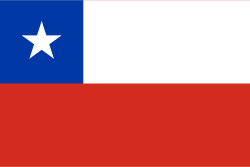Astronomers Capture Spectacular Image of Black Hole Jets in Distant Galaxy
 Chile
ChileA massive power outage has left approximately 98% of households in Chile without electricity since Tuesday, prompting the government to declare a nationwide curfew from 10 PM to 6 AM. The curfew affects regions from Arica y Parinacota in the north to Los Lagos in the south, covering over 3,000 kilometers, according to the Interior Ministry.
Interior Minister Carolina Tohá emphasized the government's primary concern for public safety, stating, “We want to ensure that no one takes advantage of the blackout to commit crimes.” To bolster security, 3,000 troops are being deployed in affected areas. The blackout was triggered by an unexpected failure of a high-voltage line in the Chico Norte region, as reported by the electrical regulatory authority.
Humberto Verdejo, an engineer from the University of Santiago, described the incident as “an atypical system failure,” predicting that restoration of power could take an extended period due to the complexity of the issue. Major events, including Latin America's biggest music festival in Viña del Mar, have been disrupted, with plans for rescheduling performances.
 Chile
Chile Chile
Chile Chile
Chile